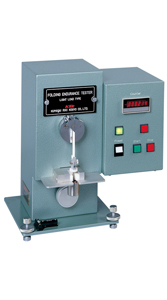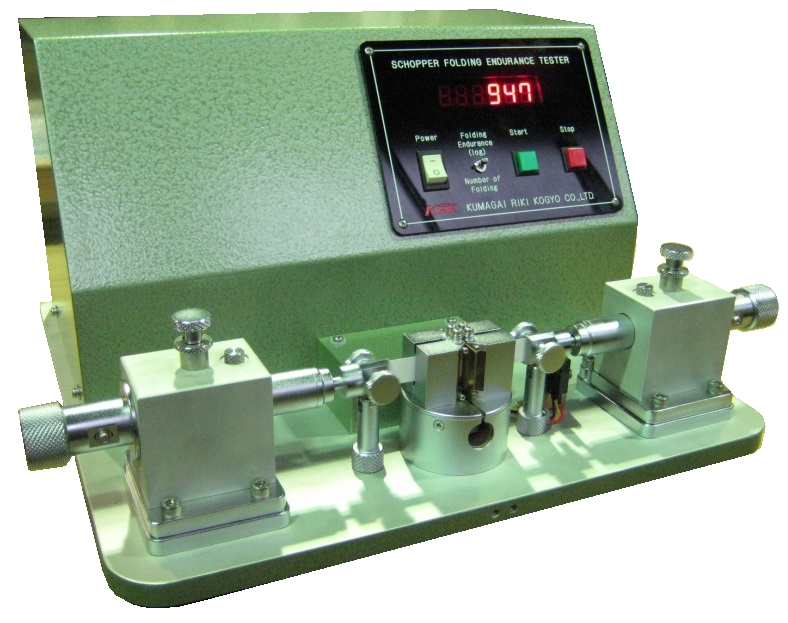The search results of the 「Physical testing Folding」
3in the case / showing1-3 case
Physical testing / Folding
- No.2015-C
- [JIS]P-8115-2001
- [TAPPI]T511om-02
- [ISO]5626
This machine counts the number of folds, which a specimen will withstand before break. The upper end of specimen is secured with the loading spring clamp and the other end with the folding clamp. The loading clamp applies a constant tension on the specimen. In this state, the folding clamp reciprocates to repeatedly fold the specimen till it breaks. The number of reciprocating actions counted is shown.
Physical testing / Folding
- No.2015-UL
- [JIS]
- [TAPPI]
- [ISO]
Acid paper, which has been used widely for about 200 years, tends to become brittle during storage. Not only books in public libraries but also private libraries may suffer from such damage. Currently, neutral paper is manufactured, replacing acid paper. However, at present, there is no tester satisfactory for evaluating deterioration of paper. With the conventional MIT folding tester, tension is too high and wear of the shaft is another problem, making it difficult to assess differences between deteriorated paper specimens. For providing a solution for this problem, we KRK developed a folding tester under an ultra-light loading range, under the direction of Dr. Oe, former professor of Tokyo University of Agriculture and Technology. The basic configuration is the same as that of the conventional MIT folding endurance tester. With this instrument, tension is given by a dead load. It has such a mechanism that shaft friction is completely removed to improve the measurement accuracy.
Physical testing / Folding
- No.2016
- [JIS]P-8114-2003
- [TAPPI]T423om-98
- [ISO]5626
This is a tester for resistance to folding of a sheet of paper or film. The specimen is inserted into a slit in the reciprocal movement metallic plate where the specimen is held at the right and left ends to be given light tension. The holding line of the specimen is subject to repeated reciprocal movement, and leads to fracture.
The number of reciprocations to cause fracture is displayed as Schopper folding resistance.
The number of reciprocations to cause fracture is displayed as Schopper folding resistance.


